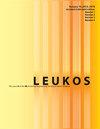使用多通道光源时照明质量和对象外观的可视化
IF 2.6
2区 工程技术
Q2 CONSTRUCTION & BUILDING TECHNOLOGY
引用次数: 4
摘要
峰值波长分布在可见光谱上的准单色发光二极管(LED)的出现,为开发可调谐照明光谱的多通道LED光源开辟了道路。由于物体的颜色外观受光源光谱功率分布的强烈影响,这些多通道光源也常被用作色彩质量研究的研究工具。在许多研究中,为了直接生成目标频谱,使用了频谱优化算法。其他论文报道了照明光谱的计算,目的是优化一个或一组一般质量指标,如辐射的发光效率和显色指数Ra或Rf。本文所遵循的方法是探索和可视化,对于给定的多通道LED光源,在选定对象的色度范围内可以达到的照明质量参数。对于任何预定义的目标白点色度,在考虑的多通道LED光源定义的约束下解析计算照明元测量值。用蛮力方法对解空间进行采样,可以评估任何一般或特定颜色质量指数的值。对于预定义的对象光谱反射率(或代表一组对象的典型光谱反射率),导出对象色度域。可以选择色域内的几个对象色度目标,例如熟悉的对象的记忆颜色,并且可以检查该色域内色调和色度的“局部”变化对一般和特殊照明质量指标以及用户偏好的影响。这可以简化基于物体的最佳照明光谱的选择。该方法在实践中使用内部开发的五通道LED光源进行了说明。本文章由计算机程序翻译,如有差异,请以英文原文为准。
Visualization of Lighting Quality and Object Appearance When Using Multichannel Light Sources
ABSTRACT The availability of quasi-monochromatic Light Emitting Diodes (LEDs) with peak wavelengths distributed over the visible spectrum has opened the way to the development of multichannel LED light sources generating tunable illumination spectra. As the color appearance of an object is strongly influenced by the spectral power distribution of the light source, these multichannel light sources are also commonly used as a research tool in color quality studies. In a number of studies, spectrum optimization algorithms are applied in order to generate a target spectrum directly. Other papers report on the calculation of an illumination spectrum with the aim to optimize one or a set of general quality metrics such as the luminous efficacy of radiation and the color rendering index Ra or Rf. The approach followed in this paper is to explore and visualize, for a given multichannel LED light source, the lighting quality parameters which can be reached within the chromaticity gamut for a selected object. For any predefined target white point chromaticity, the illumination metamers are calculated analytically within the constraints defined by the multichannel LED light source under consideration. The solution space is sampled with a brute force method and the values of any general or specific color quality index can be evaluated. For a predefined object spectral reflectance (or one typical spectral reflectance representative for a set of objects), the object chromaticity gamut is derived. Several object chromaticity targets within the gamut, such as the memory color of familiar objects, can be selected and the impact of “local” variations of the hue and chroma within this gamut on the general and special lighting quality indices and on the user preference can be checked. This can simplify the selection of an object-based optimum illumination spectrum. The approach is illustrated in practice using a five-channel LED light source which was developed in-house.
求助全文
通过发布文献求助,成功后即可免费获取论文全文。
去求助
来源期刊

Leukos
工程技术-光学
CiteScore
7.60
自引率
5.60%
发文量
19
审稿时长
>12 weeks
期刊介绍:
The Illuminating Engineering Society of North America and our publisher Taylor & Francis make every effort to ensure the accuracy of all the information (the "Content") contained in our publications. However, The Illuminating Engineering Society of North America and our publisher Taylor & Francis, our agents, and our licensors make no representations or warranties whatsoever as to the accuracy, completeness, or suitability for any purpose of the Content. Any opinions and views expressed in this publication are the opinions and views of the authors, and are not the views of or endorsed by The Illuminating Engineering Society of North America and our publisher Taylor & Francis. The accuracy of the Content should not be relied upon and should be independently verified with primary sources of information. The Illuminating Engineering Society of North America and our publisher Taylor & Francis shall not be liable for any losses, actions, claims, proceedings, demands, costs, expenses, damages, and other liabilities whatsoever or howsoever caused arising directly or indirectly in connection with, in relation to, or arising out of the use of the Content. Terms & Conditions of access and use can be found at http://www.tandfonline.com/page/terms-and-conditions .
 求助内容:
求助内容: 应助结果提醒方式:
应助结果提醒方式:


